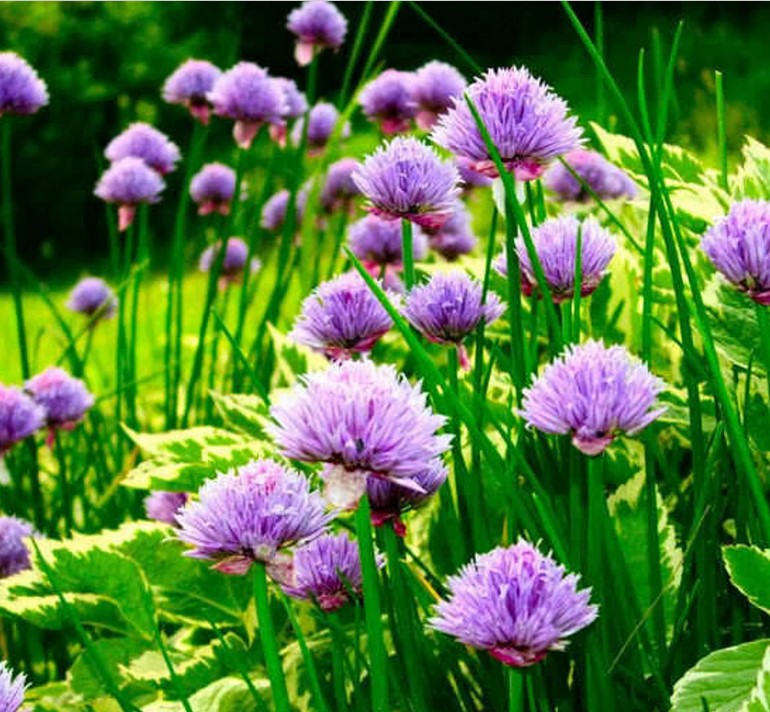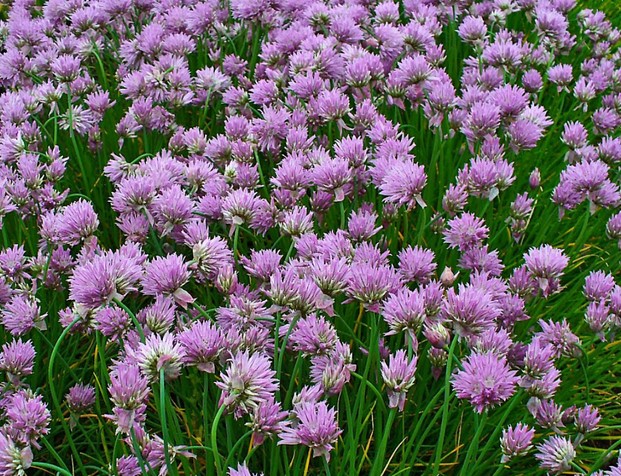Chives
Allium schoenoprasum


Characteristics
- Type: Bulb
- Family: Amaryllidaceae
- Zone: 4 – 9
- Height: 1 – 1.5 Feet
- Spread: 1 – 1.5 Feet
- Bloom Time: April to May
- Bloom Description: Purple
- Sun: Full Sun to Partial Shade
- Water: Medium
- Maintenance: Low
- Suggested Use: Annual, Herb
- Tolerates: Deer, Drought
Culture
Chives grow easily in average, medium, well-drained soils in full sun to part shade. Forms dense clumps which are easily divided in spring or fall. . Leaves are best harvested by clipping them off at the base so as to maintain the attractiveness of the clumps.
Noteworthy Characteristics
Allium schoenoprasum, commonly called chives, is a small bulbous perennial which is commonly used as a culinary herb to impart mild onion flavor to many foods, including salads, soups, vegetables and sauces. Plants also have good ornamental value. Features thin, tubular, grass-like, dark green leaves which typically grow in dense clumps to 12″. Attractive, globular, clover-like clusters of pale purple flowers subtended by papery bracts appear in spring and summer on scapes (stems) often rising above the foliage to 18″ tall. Flower heads can be used as a garnish for soups and salads.
Problems
No serious insect or disease problems. Root rot may occur in wet, poorly-drained soils.
Garden Uses
Group, mass or use as an edger in herb gardens and vegetable gardens. Also effective as an ornamental (leaves may still be harvested) in rock gardens or border fronts. May be grown in pots, or divisions may be potted up in fall, for overwintering and continued harvest on a cool kitchen window sill.
Courtesy of Missouri Botanical Society Plant Finder